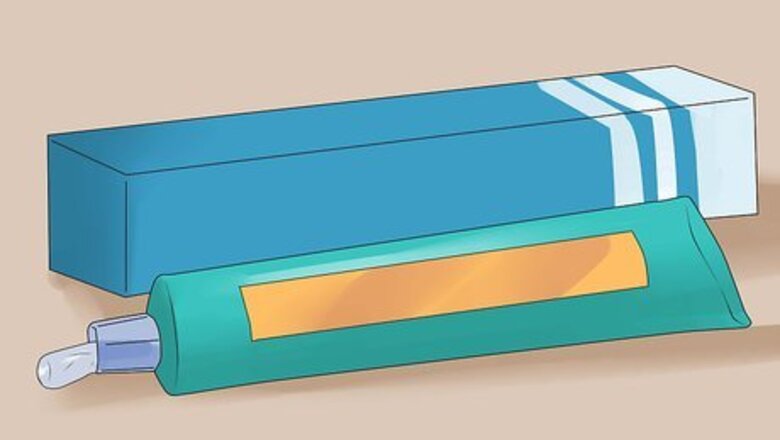
views
Brushing Your Teeth
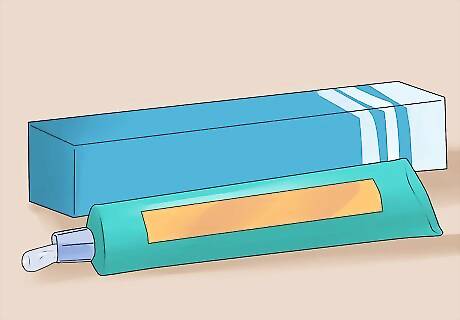
Choose the right toothpaste. You might be tempted to skimp on toothpaste, but if you want to improve your gum health, you would be wise to choose a toothpaste specifically designed for it. Pay a little extra and buy a toothpaste that is specially formulated for gum health.

Use a good toothbrush. Always look for toothbrushes that have the American Dental Association’s (ADA) seal of approval on the packaging. There are a surprising number of options you have to weigh when choosing a toothbrush. Should you use medium or soft bristles? A regular or electric toothbrush? Choose a brush size that’s not too difficult to maneuver throughout your mouth. Avoid hard-bristled brushes, as they may actually damage your gums and cause gum recession. Soft to medium bristles are recommended. Some electric toothbrushes, such as Sonic toothbrushes, have a particular movement that's beneficial because it effectively separates bacteria from the tooth surface. Studies show that the only electric toothbrush significantly better than a regular brush is a “rotation oscillation toothbrush,” in which the bristles move in both a circular and a back and forth motion at the same time.
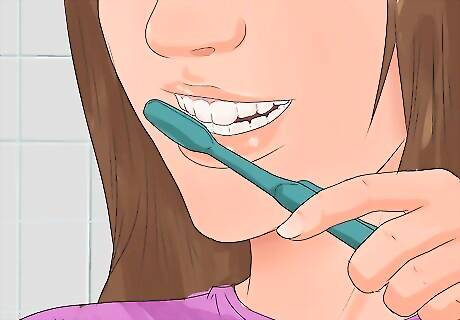
Use proper brushing technique. You may think you’re brushing well just because you’re brushing at all, but there’s a right way and a wrong way to brush your teeth. Keep the brush at a 45° angle to your gum line. Your stroke length should be roughly the length of one tooth. Use circular strokes for the chewing surfaces of your back teeth. Brush gently, but firmly. Applying too much pressure can strip the tooth of enamel and cause receding gums. Clean the interior surface of your teeth in an up-and-down motion. Remember to brush the surface of your tongue.
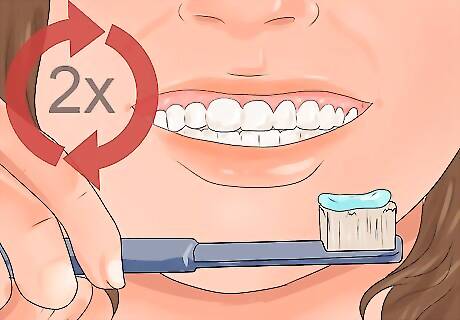
Brush before meals at least twice a day. While the conventional wisdom is to brush after meals to remove food particles, dentists suggest you brush before meals, because they are concerned with plaque removal, not food removal. Brushing before meals actually avoids tooth and gum damage that can come from spreading and brushing acids from your meal around your mouth. Even if you adopt the practice of brushing before meals, brushing before you go to bed is still essential. Although twice a day is the bare minimum, it’s recommended that you actually brush three times a day for optimal oral health.
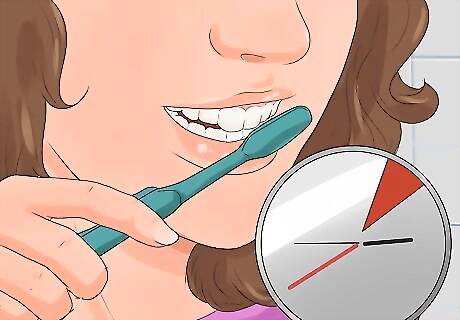
Brush for at least two minutes. Most people don’t brush their teeth for long enough to truly protect their tooth and gum health. Split your mouth into four quadrants: upper left, upper right, bottom left, and bottom right. Brush each quadrant for at least thirty seconds to ensure you’re brushing long enough, and hitting all parts of your mouth. Make sure you brush each tooth surface at least 10 times.
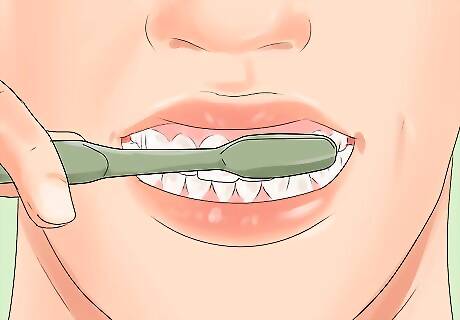
Don’t brush too often or too vigorously. Brushing more than three times a day on a regular basis, or applying too much pressure when you brush can actually damage your gums and teeth. Dentists call this “toothbrush abrasion,” and it can result in both receding gums and enamel deterioration that can lead to sensitive teeth. The main cause is represented by the back and forth brushing with high pressure and rapid movements. If you’re using an electric brush, let it do all the work. Don’t apply extra pressure of your own.

Replace your toothbrush regularly. Toothbrush bristles will wear down and become less effective with use. They can also be homes for all sorts of bacteria they find in your mouth, so you need to replace them from time to time. Dentists recommend replacing your toothbrush every three to four months, or when the bristles start spreading apart making each stroke cause more harm than good
Flossing
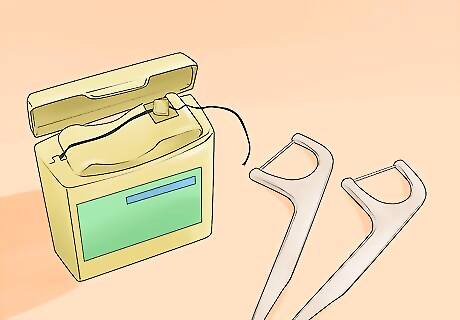
Use any type of floss. There are a wide variety of flosses in the dental aisle at the store, from nylon to monofilament, from flavorless to mint-flavored. There isn’t a significant difference between any of these types of floss. Use whichever kind feels most comfortable for you. More important than what type of floss you use is that you actually use it regularly.
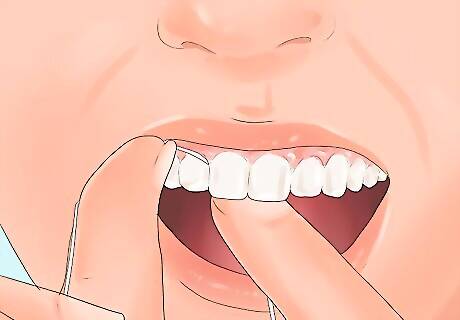
Floss at least once a day. Flossing can be uncomfortable and sometimes gross, but dentists recommend it for a reason. Some say that flossing is actually more important than brushing for maintaining healthy teeth and gums. Whereas over-brushing can be damaging to your gums, over-flossing won’t cause any harm. Flossing also prevents stains between your teeth. These are very difficult to remove even by the dentist. It doesn’t matter when you floss — day or night, before or after meals. Just make sure you do it at least once a day.
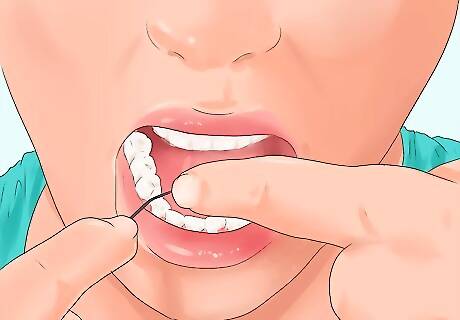
Use proper flossing technique. The ADA provides specific instructions on how to perfect your flossing technique. Use about 18 inches of floss, securing them to your fingers by winding them around the middle finger on each hand. Make sure not to cut off blood circulation to your fingertips. Unwind and rewind as necessary throughout the flossing process. Pinch the floss between your thumb and forefinger to stabilize. Use a back-and-forth sawing motion to ease the floss between your teeth, all the way up to the gum. Don’t snap the floss up hard against your gums. This can be painful, and can cause gum damage over time. Curve the floss into a “C” shape against the side of the tooth. Gently and slowly move the floss up and down the length of the tooth. Insert the floss between the tooth surface and the prominent gum, called papilla. Floss every single tooth, including the hard-to-reach ones in the back of your mouth. Floss both sides of each tooth.
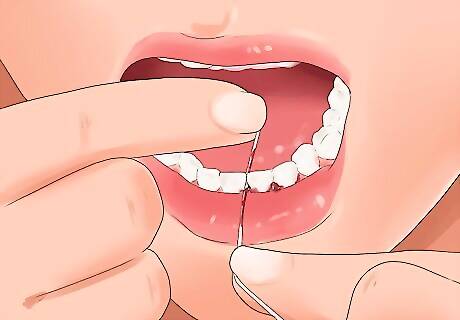
Floss through the bleeding. If you’re not a regular flosser, you’ll probably see some blood on your floss when you start back up. Don’t take this as a hint to stop flossing! Your gums are bleeding because you’re not flossing! Continuing your daily flossing will help stop the bleeding over time and improve, not hurt, your gum health.
Using Mouthwash
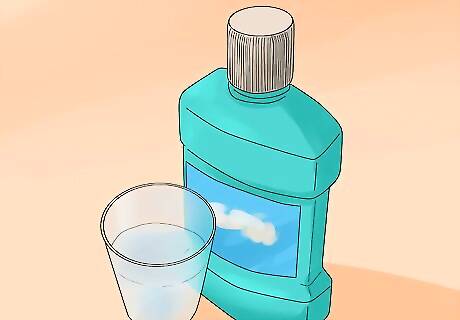
Buy the right mouthwash. Mouthwash is an important product because you only target your teeth and gums through brushing and flossing. Mouthwash can treat the rest of your mouth — the cheeks, the tongue, and other exposed surfaces that need cleaning in order to maintain gum health. Choose a mouthwash that has the ADA's seal of approval on the packaging. Mouthwash can be seen as an oral disinfectant that eliminates a high percentage of the bacteria and plaque involved in cavities or any other dental and mucosal issues. Choose therapeutic mouthwash specially formatted for gum health over cosmetic mouthwash designed for temporary breath freshening. Avoid alcohol-based mouthwashes that can dry out the skin and cause lesions over time.

Make your own mouthwash. Studies have suggested that turmeric is as good at treating gum disease like gingivitis as store-bought mouthwashes. Dissolve 10 mg of turmeric extract in 3.5 oz. of hot water. Let the water cool down to a comfortable temperature. Other natural alternatives to store-bought mouthwashes include cinnamon, fennel, ginger, lemon essential oil, tea tree oil, raw honey, and many others.

Use proper mouth washing technique. Look at the packaging for specific instructions before proceeding, because mouthwashes with special formulas might have different recommendations for how long you should keep it in your mouth, or whether or not you should dilute the product. If the packaging says to dilute the product, follow their instructions for doing so. Use warm water. If you feel a burning sensation or the taste is too strong, dilute it further. Pour it into your mouth and swish it around your mouth vigorously for thirty to sixty seconds. Gargle the mouthwash in the back of your throat for another thirty to sixty seconds. Spit the mouthwash out into the sink. Rinse your mouth with water.
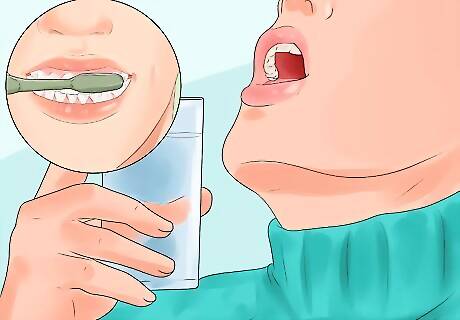
Don’t use mouthwash immediately after brushing. Rinsing your mouth with mouthwash can actually undo some of the benefits of brushing your teeth. For best results, either use mouthwash before brushing your teeth, or at least half an hour after brushing your teeth.
Seeking Professional Help
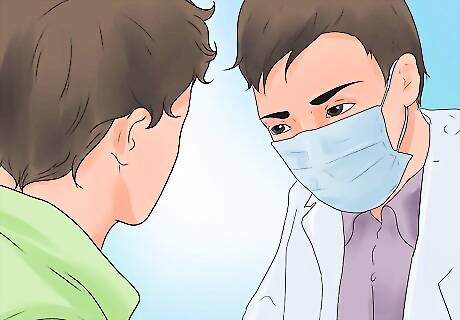
Make regular appointments with a dentist. Even if you’re taking care of your oral hygiene very well at home, there are certain things — like removing plaque buildup — that simply can’t be done at home. You must see a dentist with professional tools for this aspect of your gum and tooth health. How often you visit the dentist depends on your individual needs, but you should have your teeth and gums checked at least once a year. Your dentist will advise you on when you should return for your next checkup.
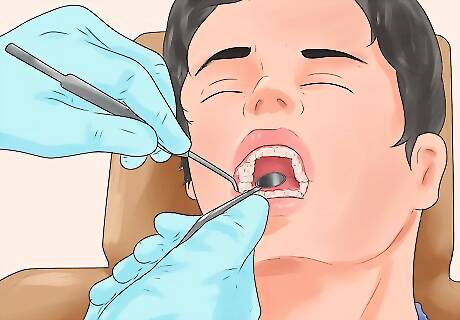
Seek immediate attention if your condition requires it. There are many problems that could require professional attention, but the main symptoms for gum disease include: Swollen or red gums Bleeding beyond what is normal for early flossing Loose teeth Receding gums with pain or sensitivity Chronic bad breath or bad taste in the mouth
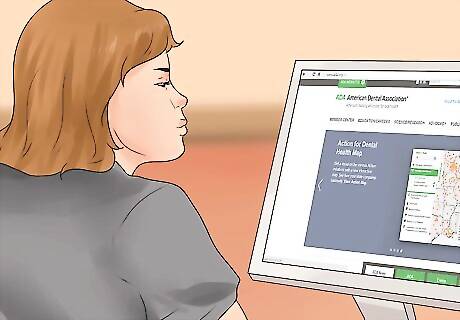
Find a good dentist. The ADA provides a search tool for finding ADA-member dentists in your local area. They also recommend taking the following step for finding a reputable dentist in your area: Ask friends, family, and coworkers for recommendations Ask your doctor for a recommendation If you’re moving, ask your current dentist or their staff to help you find a reputable dentist in your new area If you have special needs, such as gum disease, you may need to find a specialist, like a periodontist.

Know which dentists are in your healthcare network. Visit your insurance company’s website or call their helpline to find out which dentists will accept your insurance. If you have your heart set on a specific dentist, it will be easier to work with the dentist’s office than with the insurance company, so ask the dentist to make an exception in taking you on as a patient.

Find low-cost dentists in your area. If you don’t have health insurance, or if your insurance does not cover dental exams, do some research to find the low-cost options that are available to you. The safest, most reputable option is to find a clinic that is affiliated with a dental school. These clinics often offer free services to children under 18, along with reduced-fee service for adults. Find the website for your state’s dental association to locate a local dental school clinic.



















Comments
0 comment